Ecuadorian goat stew {Seco de chivo}
Ecuadorian seco de chivo is a goat stew dish braised in a sauce of garlic, cumin, achiote, oregano, peppers, onions, cilantro, tomatoes, chicha or fermented corn drink, naranjilla or lulo juice, panela and spices.
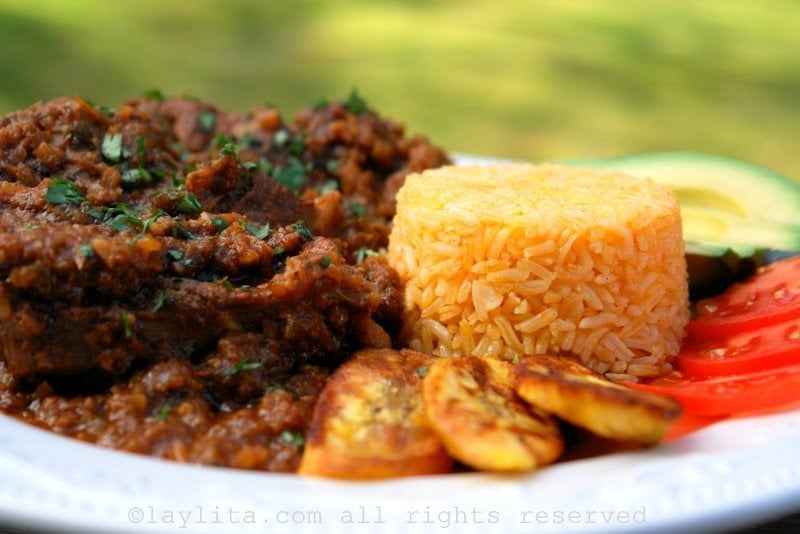
My first memory of seco de chivo or Ecuadorian goat stew is when I was very young (maybe 5 or 6). We went to a nearby village for their fiestas or annual festivities. Everyone was talking about how this town had some of the best seco de chivo in the area and they only prepared it during their fiestas.
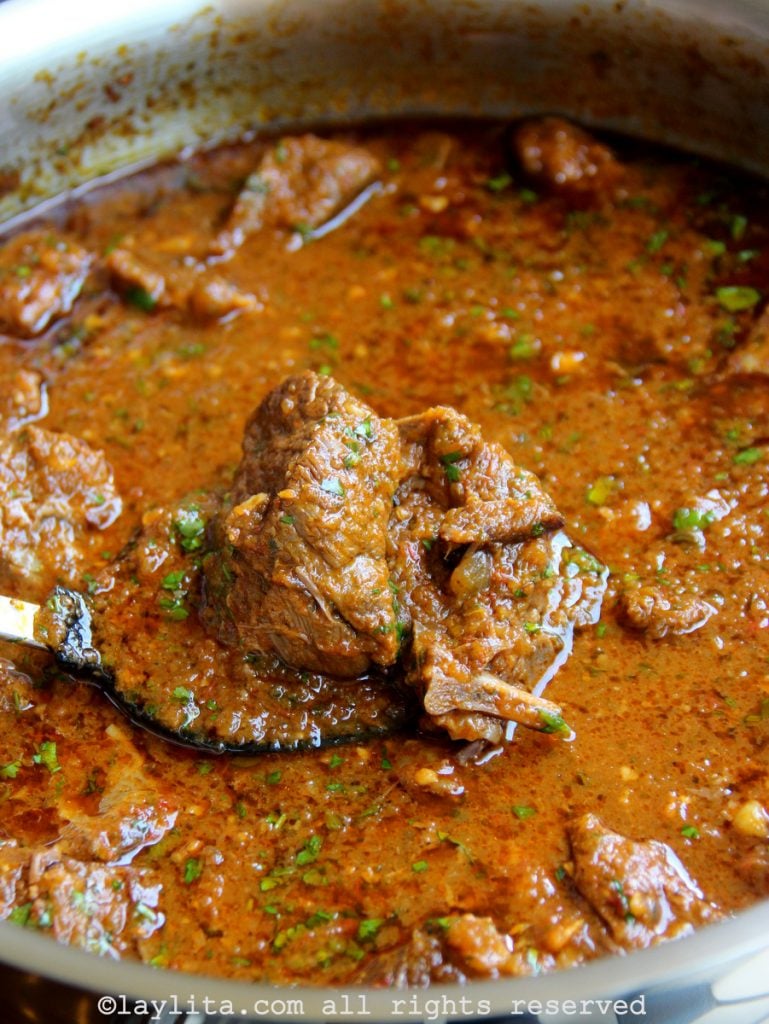
There are several versions of seco de chivo, most of the ingredients are very similar, but one of the variants is the type of drink or beverage used to prepare the stew. I’ve had it prepared with chicha, an Andean fermented corn drink, as well as with beer, which is more common now because it is easier to find beer than chicha. Another option is fruit juice, specifically a fruit called naranjilla (also known as lulo in Colombia), which is a very tart fruit that can be found mainly in Ecuador and Colombia.
Jump to Recipe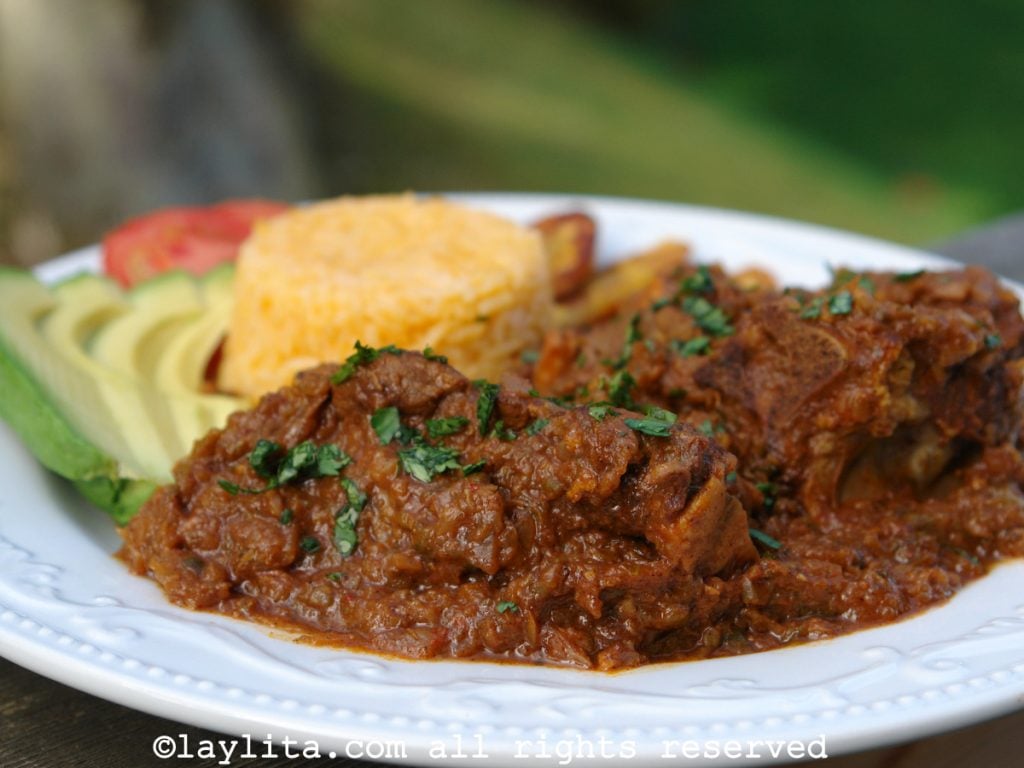
The taste of the goat stew will vary based on which drink you use, in my opinion they all taste great, but there are people that have very strong preferences on how they like their seco de chivo prepared, the most traditional preparation is using chicha.
Originally when I was planning this recipe I was going to make either with beer or naranjilla juice because I knew I could find frozen naranjilla pulp and even frozen naranjilla fruits. However, to my surprise I actually found chicha when I went to the Latin grocery store, it does come from Peru so it is slightly different than the Ecuadorian chicha, but it is close enough.
So this time I am preparing the seco de chivo with chicha – you can replace the chicha with beer as the quickest option. I’ve also found that a combination of beer, white wine and a bit of orange juice work well as a chicha replacement option. Chicha is also very similar to cider, so a fruity semi-dry cider could also be used.
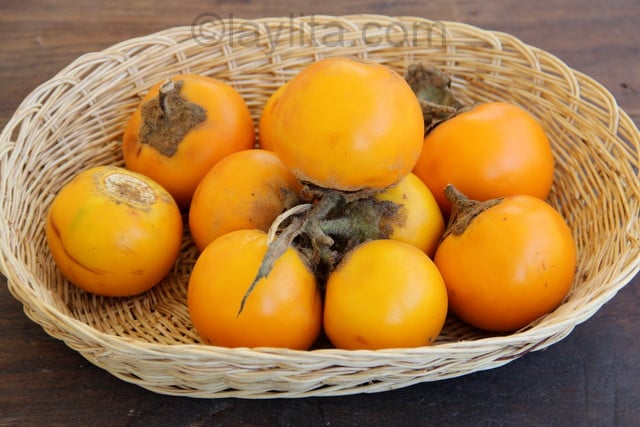
Another ingredient used to make this dish is called panela or piloncillo; it is hard brown sugar and comes in a brick shape (though I’ve also seen it in cone shape). Panela is made directly from sugar cane juice, in Ecuador it is made in trapiches, which is a very rustic processing factory.
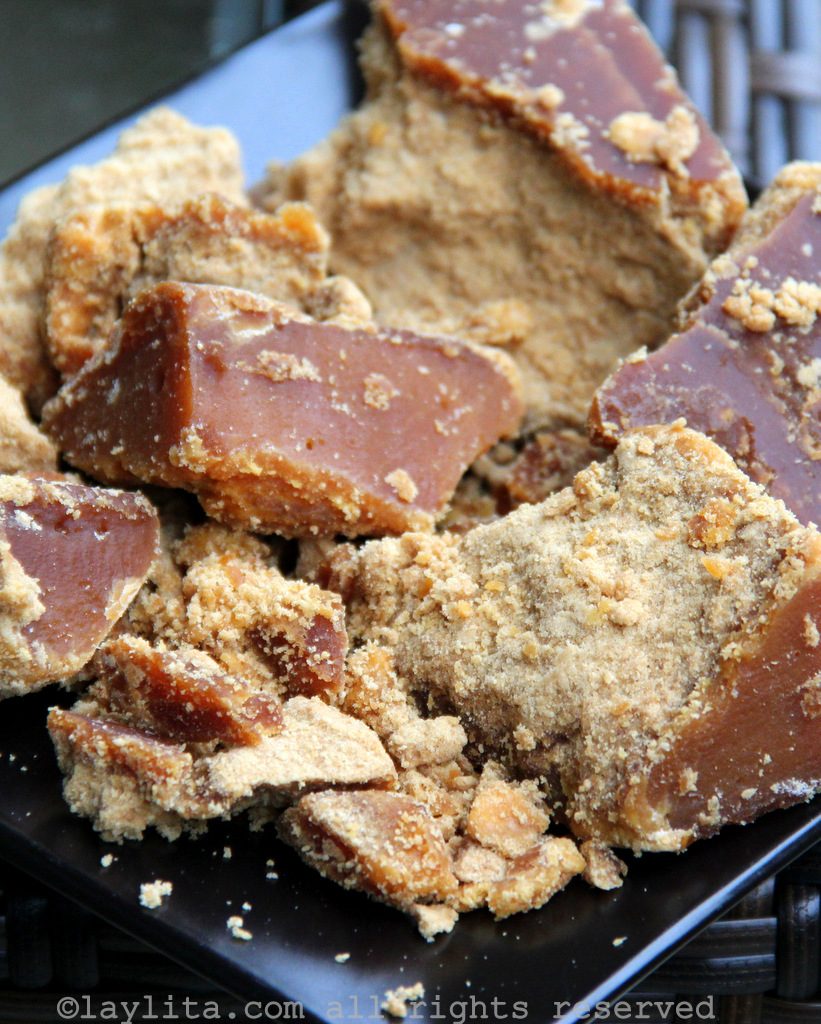
We had a few trapiches close to our farm and we had a small field of sugar cane. When it were ready to harvest the canes are cut with machetes (the bases are left and grow back). Then the sugar cane is loaded unto donkeys (which are wearing these special wood devices to carry the sugar cane).
Next the sugar cane is taken to the nearest trapiche, where it first goes through a press that squeezes the juice out. The juice, which is called guarapo (and is delicious mixed with bitter orange juice as it’s own drink), is then cooked in these large rectangular metal devices (that have fires going underneath) and stirred with these huge wooden spoons (that almost look like kayaking paddles).
It goes through several different of these cooking stages until at the end you have a very thick syrup. Which is then poured into small brick shape wood molds. Once the panela dries it hardens and the molds are removed.
It is a very interesting process and just the trapiche part takes about an entire day, and of course as a kid you get to drink some guarapo and taste the cane juice syrup. In Ecuador we use panela as most people would use sugar: to sweeten coffee, tea, juice, to bake and to make marmalades or fruit preserves.
The panelas are kept in their hard brick form until ready to use and then they are melted down with water to make a syrup called miel de panela (panela honey) which is used to sweeten things, or it is also grated when used in certain dishes or for baking. Panela can be found in most Latin grocery stores or even in certain mainstream grocery stores.
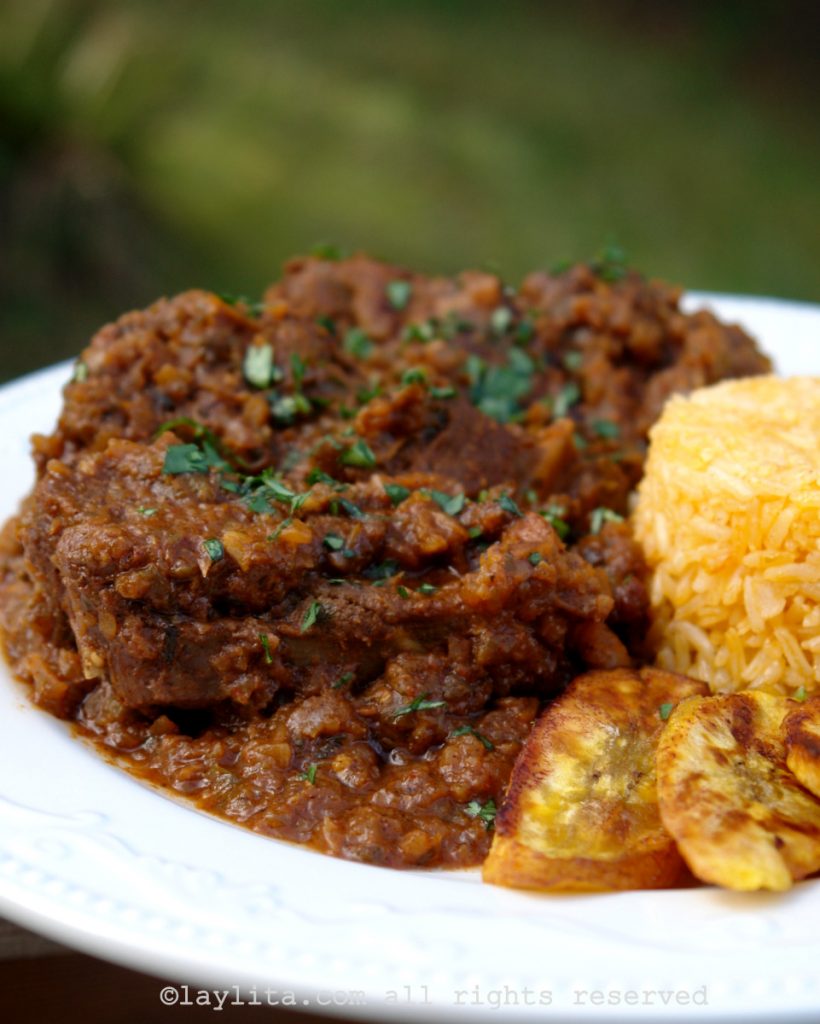
Enough about panela, another interesting thing about seco de chivo and goat meat in general is that when it is prepared the correct way it should not have a goaty flavor (which you usually find in goat cheese) and it should also be very tender, which is why it is braised or cooked very slowly over low heat. Seco de chivo is served with arroz amarillo (rice cooked with a little bit a achiote or annatto powder to give a yellow color), fried ripe plantains and avocado slices.
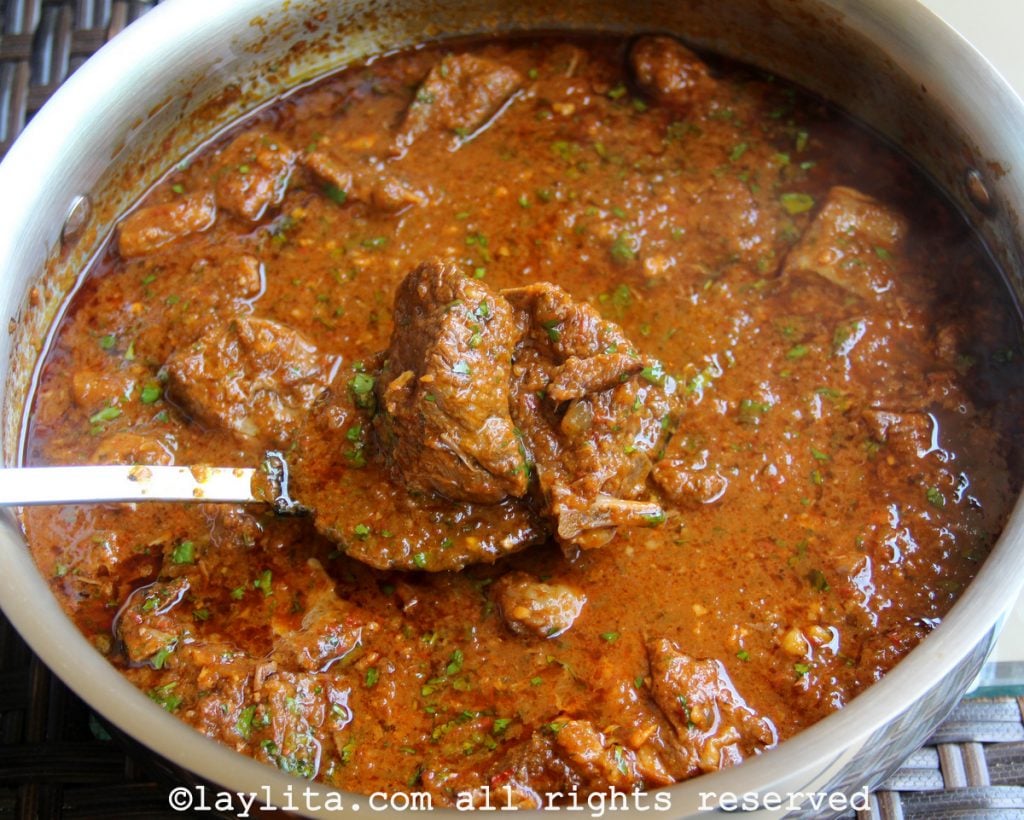
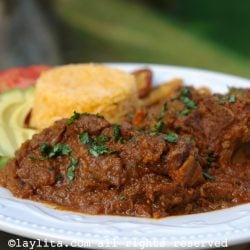
Braised goat stew {Ecuadorian seco de chivo}
Ingredients
- 2 lb goat meat with bones, cut in medium to large chunks
- 6 garlic cloves crushed
- 1 tsp ground cumin
- 1 tsp dry oregano
- 2 cups chicha
- 2 tbs oil
- 2 tsp ground achiote
- 1 red onion minced
- 1 bell pepper minced
- 3 to matoes cut into quarters
- 1 aji or spicy pepper red jalapeño or serrano
- ½ bunch of cilantro
- 2 whole naranjillas fresh or frozen or ½ cup naranjilla juice (from frozen pulp)
- 2 tbs grated panela or piloncillo
- 1 tsp all spice
- 2 tbs cilantro finely chopped
- Salt to taste
Suggested side dishes:
- Arroz Amarillo or rice with annatto/achiote
- Fried ripe plantains
- Avocado slices
Instructions
- Season the goat meat with garlic, cumin, oregano, salt and 1 cup of chicha or beer, let marinate for at least an hour.
- Remove the meat from the marinade and save the marinade juice for later.
- Heat the oil over high temperature in a large sauté pan and fry the meat until browned on each side.
- Lower the heat to medium and add the minced onions, achiote and minced bell peppers, cook until the onions are soft, about 5 minutes.
- Meanwhile blend the tomatoes, cilantro and hot peppers with the remaining cup of chicha and the naranjillas or naranjilla juice, strain and add the strained puree to the meat.
- Add the saved marinade juices, the grated panela and all spice, bring to boil, lower the temperature and simmer until the meat is very tender and the sauce is thickened, about 2 -2 ½ hours.
- Taste and add salt if needed, sprinkle with chopped cilantro and serve warm.
- Serve with arroz amarillo or yellow rice, fried ripe plantains and avocado slices.

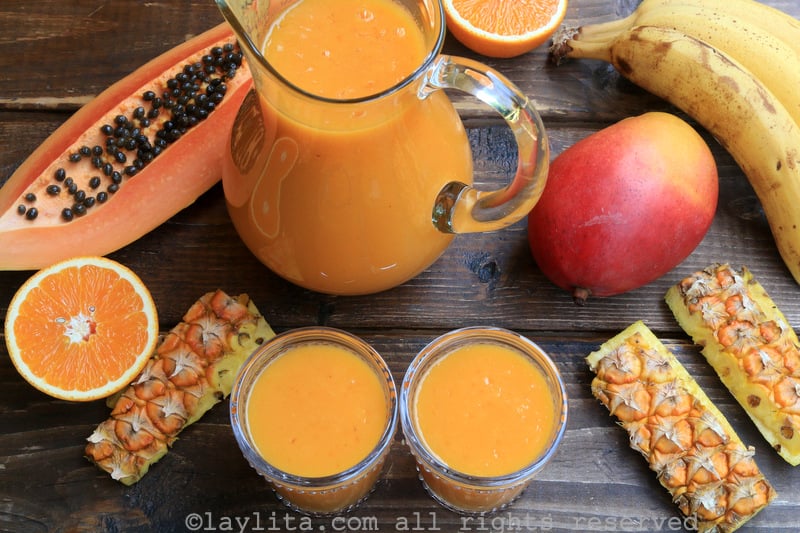
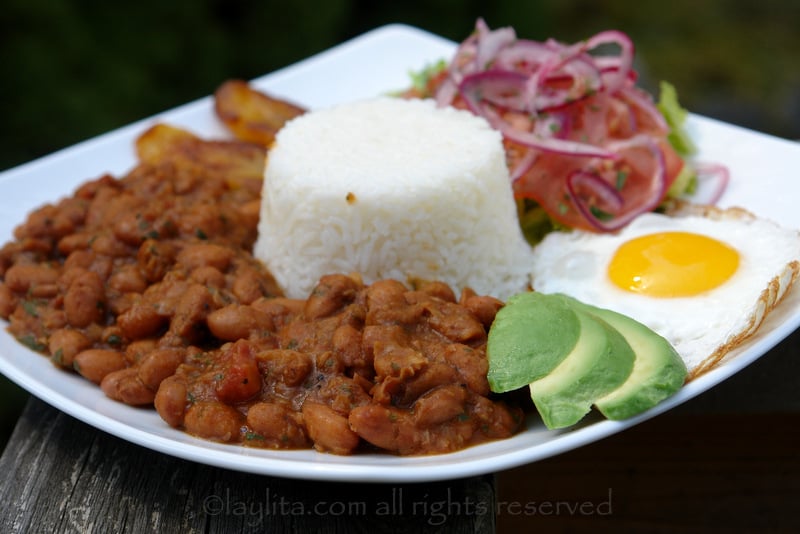
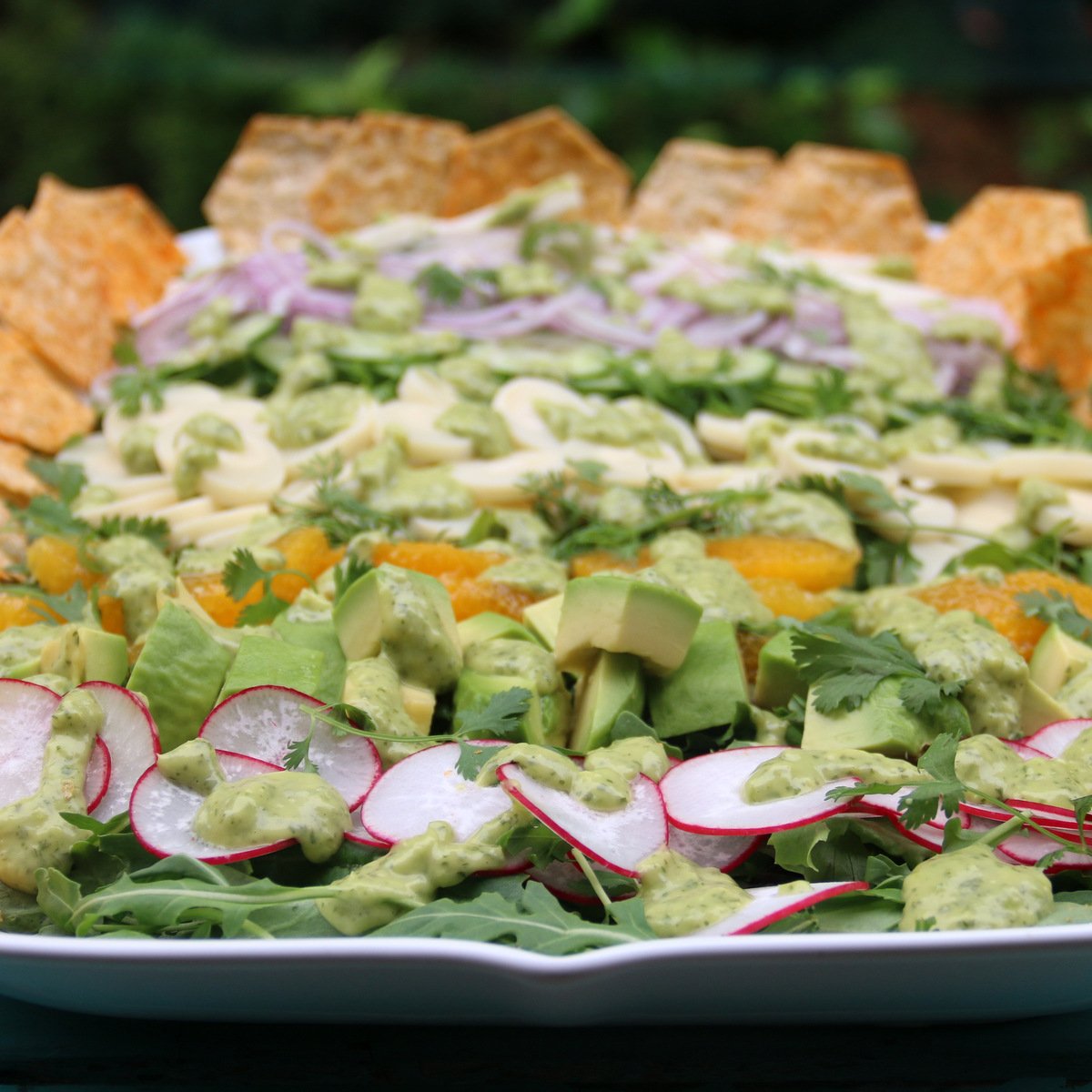
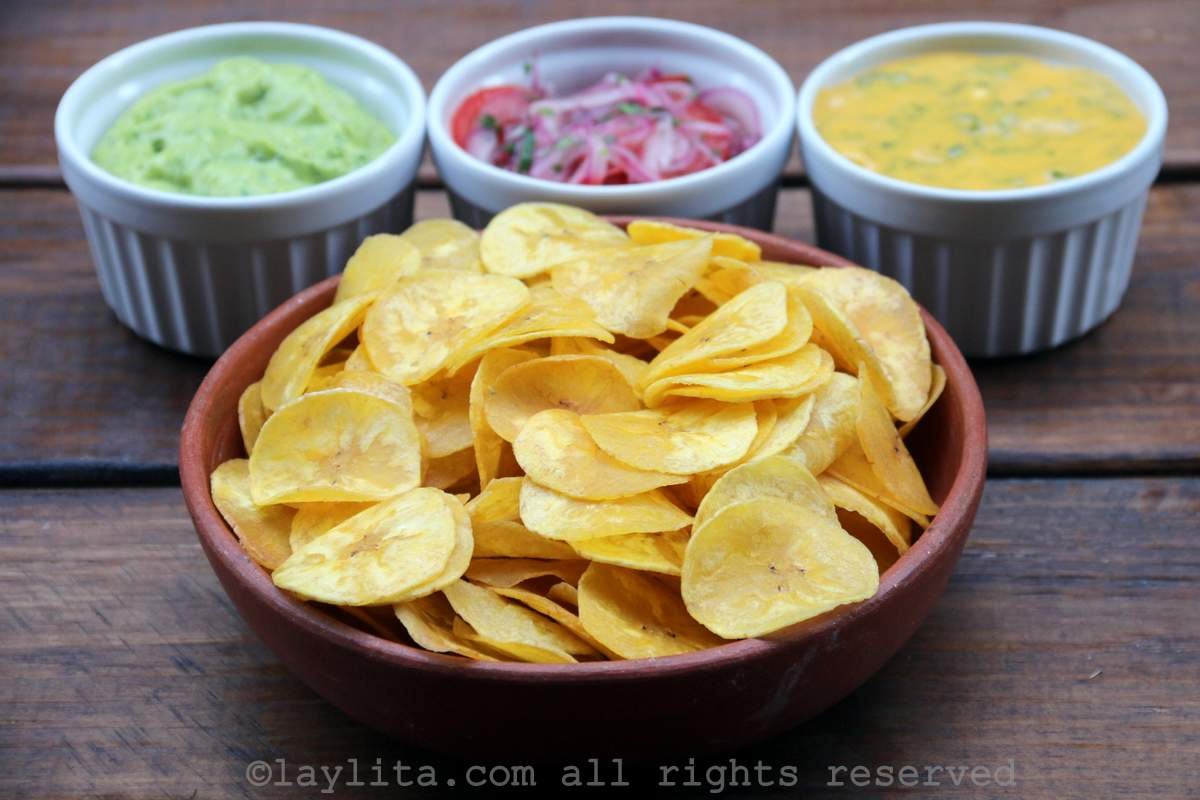
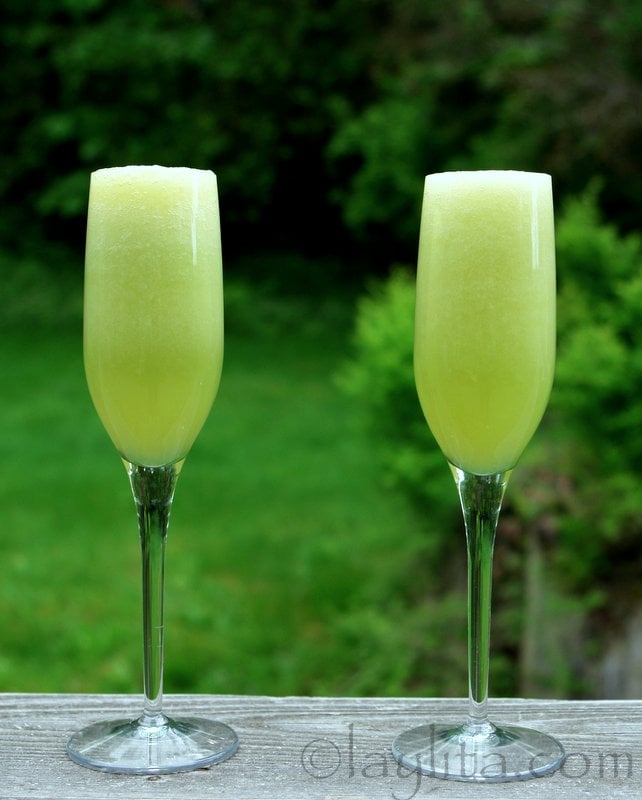
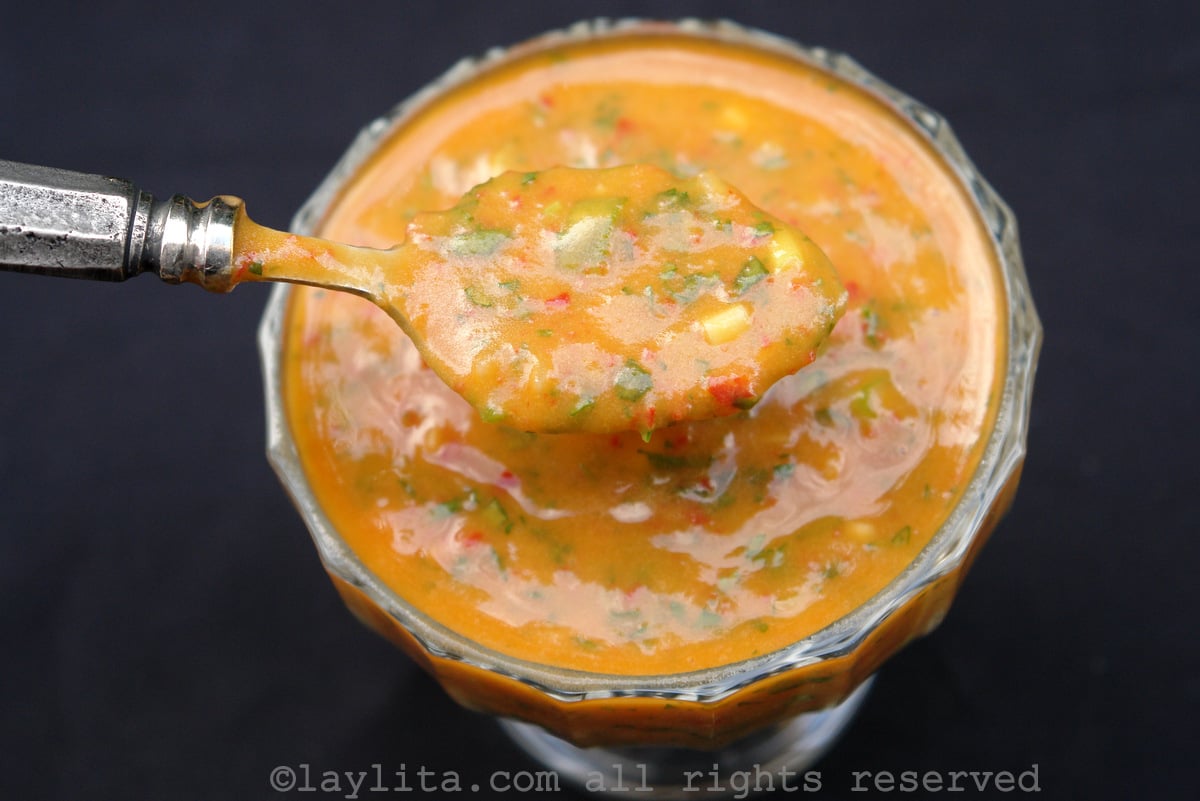
This is the best recipe site I ever found!
My wife is from Ecuador and I have been made 3 dishes from your recipes already. She was shocked on how good they were. Where can I find the panela or piloncillo? I want to make this recipe but the supermarket does not have if.
Thanks!
Hi Frank – If you have a Latin or Mexican grocery store nearby it is the best option for panela, I’ve also found quite a few Latin American ingredients in Asian supermarkets (but I don’t recall seeing panela), last resort if you can’t find it is to use brown sugar.
I wonder if this recipe would work on wild game such as elk or deer? This is the type of meat that it’s hunted where I live. I could not possibly find any goat without driving 4 hours. I will try it and let you know how it goes
Hi, I’m from Ecuador but living in California for many years. I’m learning how to cook ecuadorian dishes and I find this page very interesting.
I have a question about preparing ceviche ecuadorian style. In Ecuador we use corvina fish for ceviche, what’s is the equivalent for that fish here in the US (so. California is where I live). I appreciate any useful information on this.
And congratulations for the recipes and pictures.
Thank you. Roberto U.
Hi Roberto – Corvina is a type of sea bass so you can use Chilean sea bass or halibut (also a type of sea bass) to make good ceviche. At least here in the NW halibut is readily available and fresher than Chilean sea bass.
I just stumbled onto this site and am extremely impressed. What a glorious way to present a recipe. I feel as if I have just had a mini vacation, and I will linger in that moment as I prepare tonights dinner. Thank you for sharing your gifts. xo
Hi,
This looks amazing – the only problem for me is that I can’t get hold of any goat meat (I tried my two local butchers to no avail).
If you were to replace the meat, what would you use? Beef?
I love the site – Ecuador is an amazing country, I was only there visiting for a couple of days but totally fell in love with the place. The food there was amazing.
Andy
Hi Andy – Thanks for the comments, you can replace the goat meat with lamb.
you can find goat at indian food market Halal meat
hi everybody this really is delicious but don’t use Guinness, it is to dark,if you live abroad try Budweiser,Ice Foster or Stella Artois
Hi Jeannine, in Ecuador a pilsner or lager beer is the most commonly used for cooking (and drinking), I haven’t ever tried making seco de chivo with Guinness, it actually sounds very interesting, my only concern is that the flavor of the Guinness might be too overbearing for the goat. Let me know how it goes.
We just butchered a goat and are looking for recipes for cooking it. This looks amazing! Thank you for inspiring us in the kitchen. I can not wait to try this. What kind of beer should I use? A friend mentioned using Guiness as a tenderizer. Jeannine
The chicha makes a huge difference and can be purchased online ahead of time.
Thank you, Vicki. I would substitute either with passion fruit juice or orange juice, but probably not lime juice.
Hi Layla – This looks delicious, as does everything else on your blog. Do you think I could substitute a mix of lime and orange juice for the naranjilla?
I made this recipe exactly as you wrote it, Laylita, and it is the most delicious seco I have ever had. What is it that makes chivo so flavorful? Thanks so much for this and all your awesome Ecuadorian recipes!